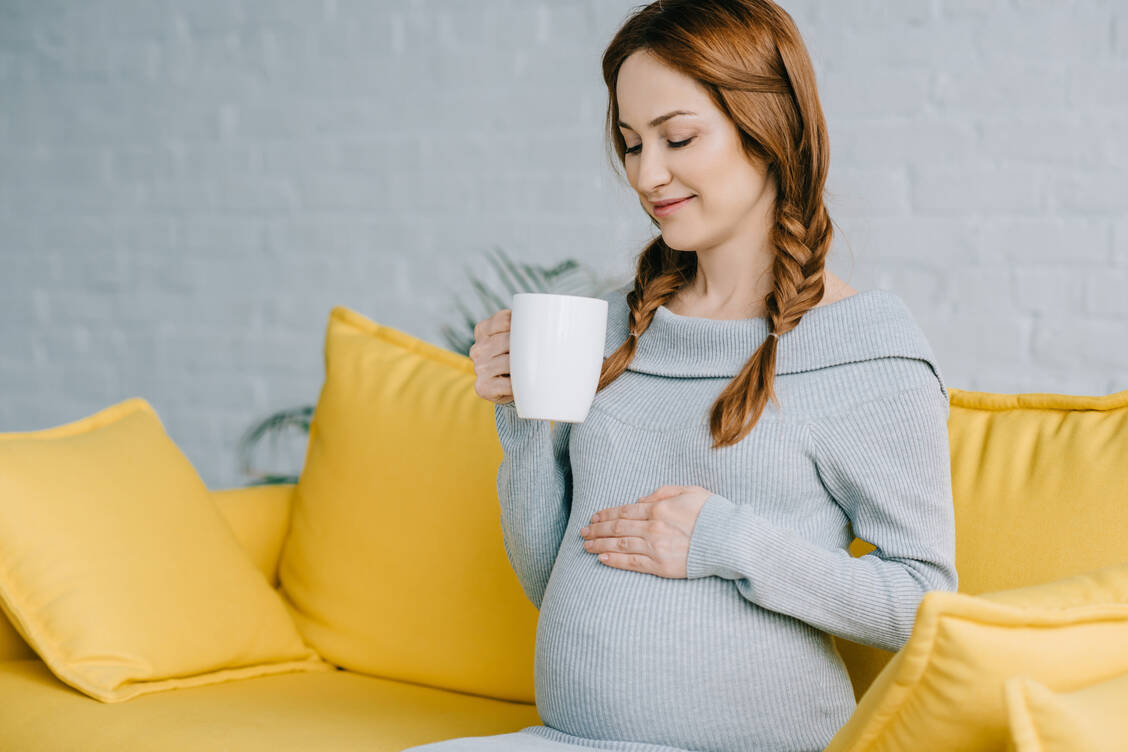
Weitere Angebote der PZ

© 2025 Avoxa - Mediengruppe Deutscher Apotheker GmbH
Back pain in pregnant women |

If back pain occurs, it helps to sit upright, even with the help of pillows. / Foto: Adobe Stock/Lightfield Studios
The effect of hormones and more body weight due to water retention and the baby in the belly put an unusual strain on the back during pregnancy. Under the influence of the hormone relaxin, among other things, ligaments, cartilage and tendons become softer and the spine loses some of its stability. Added to this is the increasing body weight due to the storage of water and the baby in the belly. This shifts the body’s centre of gravity. Women unconsciously try to compensate for this by hunching their backs. All of this contributes to pain, especially in the lower back, where the lumbar spine is located. This pain can be unilateral and stabbing, sometimes radiating into the legs, but is usually dull and permanent in the area of the lumbar spine and the surrounding muscles. Pregnant women experience this pain especially in the last trimester, when the support structures become increasingly softer to make room for the birth process.
If pain occurs in waves and also already in the second trimester, then PTA should quickly refer pregnant women to doctors, because behind these symptoms there may be a kidney pelvis inflammation, which can be dangerous for mother and child. In the first trimester, back pain can be a symptom of an ectopic pregnancy. In this case, too, a quick visit to the doctor is absolutely advisable. This always applies if the pain is severe, regardless of the location. In rare cases, the symptoms are caused by a herniated disc that developed during pregnancy. It can also manifest itself with tingling and numbness. As a rule, it can be treated conservatively, i.e. with physiotherapy. Surgery is rarely necessary during pregnancy. A herniated disc does not usually prevent the baby from being born naturally. However, the decision on this is always up to the attending doctors.
If you are planning to become pregnant, it helps to strengthen your back and abdominal muscles in advance with a mixture of endurance and strength training to stabilise your back. Both can also be continued during pregnancy. It is best to discuss the intensity of the exercise with your gynaecologist, but a lot is possible with sports in an uncomplicated pregnancy. If back pain occurs, expectant mothers can do the following themselves:
And what about painkillers? With regard to ibuprofen, embrytox.de draws on a very high level of experience. The authors write that the vast majority of studies on the use of painkillers in the first trimester have dealt with NSAIDs. They summarise: »Summarising all the data available to date, there are no serious indications of teratogenicity and embryotoxicity in humans«. embryotox.de names ibuprofen as the analgesic of choice alongside paracetamol in the first two-thirds of pregnancy, although it should not be taken uncritically or for several days without medical advice. In the last trimester, neither ibuprofen nor other NSAIDs should be taken. Paracetamol is allowed in every trimester.
In 2021, a consensus statement by scientists in the scientific journal »Nature Reviews Endocrinology« advocated the cautious use of paracetamol in pregnancy because studies showed that paracetamol in pregnancy could possibly be linked to attention disorders and autistic symptoms in the offspring. Experts attach different importance to these results. Some criticise that results with regard to attention deficit disorder or autistic structures in the child’s personality are only borderline significant, but are reported in the population as if it were a problem with serious consequences for the individual. For the latter, the risk seems to be considerably lower if the mother took paracetamol during pregnancy than if she was exposed to stress, an analysis showed. Of course, the risk-benefit analysis of the use of these painkillers during pregnancy should be carried out carefully in any case.
| Deutsch/German | Englisch/English |
|---|---|
| Aufmerksamkeitsstörung | attention deficit |
| Autismus | autism |
| Bandscheibenvorfall | slipped disc |
| Eileiterschwangerschaft | ectopic pregnancy |
| Hohlkreuz | hollow back |
| Kirschkernkissen | cherry pit cushion |
| Lendenwirbelsäule | lumbar spine |
| Muskeln | muscles |
| Nierenbeckenentzündung | pyelitis |
| Nutzen | benefit |
| Risiko | risk |
| Rücken | back |
| Schmerzmittel | painkillers, analgesic |
| Schwangerschaft | pregnancy |
| Seitenlage | lateral position |
| Stillkissen | nursing cushion |
| Trimenon | trimester |
| Vollbad | full bath |
| Wärme | warmth |
| Wassereinlagerung | water retention |